Coffee Table Scale: How Size & Design Affect the Average Weight
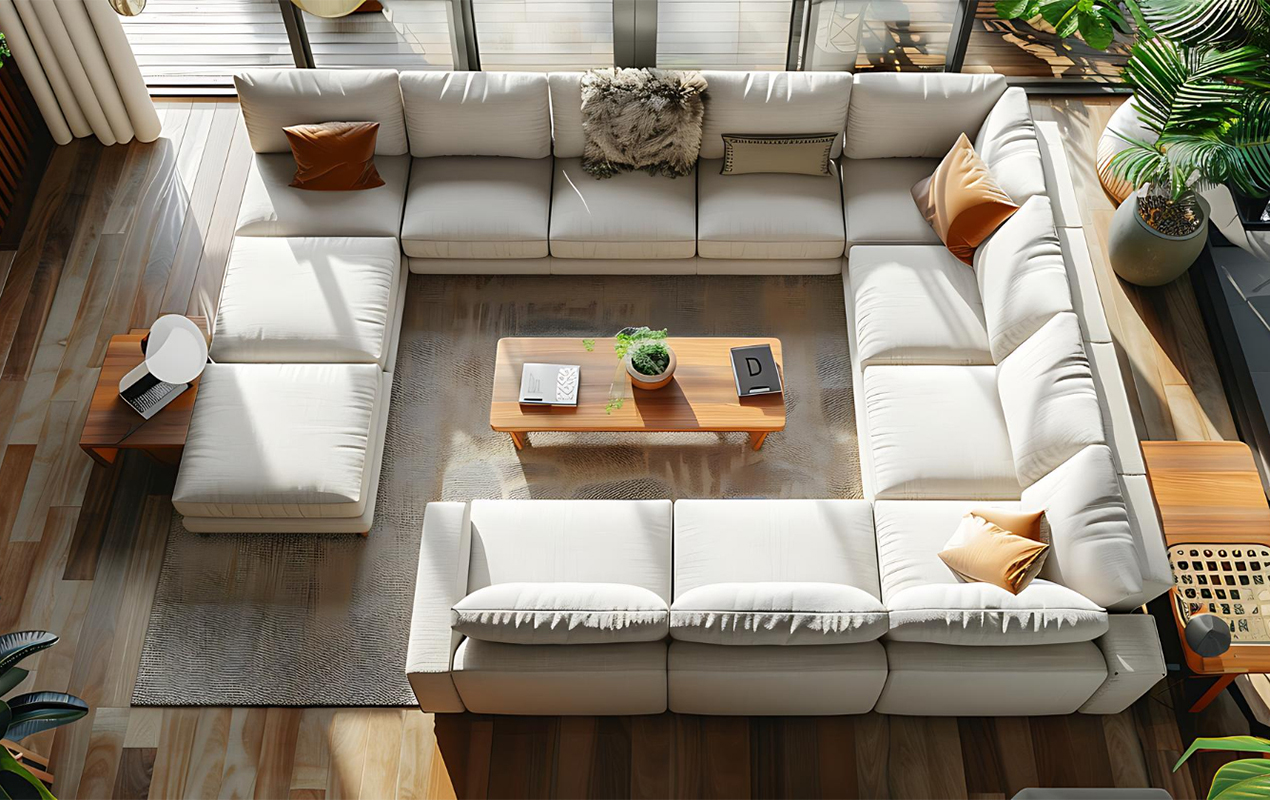
Have you ever nearly thrown out your back trying to rearrange your living room, only to discover your coffee table weighs as much as a baby elephant? This might make you wonder, "What is the average coffee table weight?" Or perhaps you've eyed a sleek, minimalist design, wondering if it could withstand a stack of art books without buckling. The weight of a coffee table isn't just a number on a shipping label; it's a crucial factor that dictates how you interact with this seemingly humble furniture piece. A too-heavy table can be a logistical nightmare, while a too-light one might skitter across the floor with a gentle nudge. Exceeding practicality, the weight subtly influences the table's aesthetic and, most importantly, its safety. A top-heavy design might be prone to tipping, posing a risk, especially in households with curious children or energetic pets.
In this article, we delve into the often-overlooked metric of coffee table weight. We'll uncover the average weights you can expect, dissect how size and design choices dramatically impact those numbers, and equip you with the knowledge to choose a table that balances style, functionality, and safety.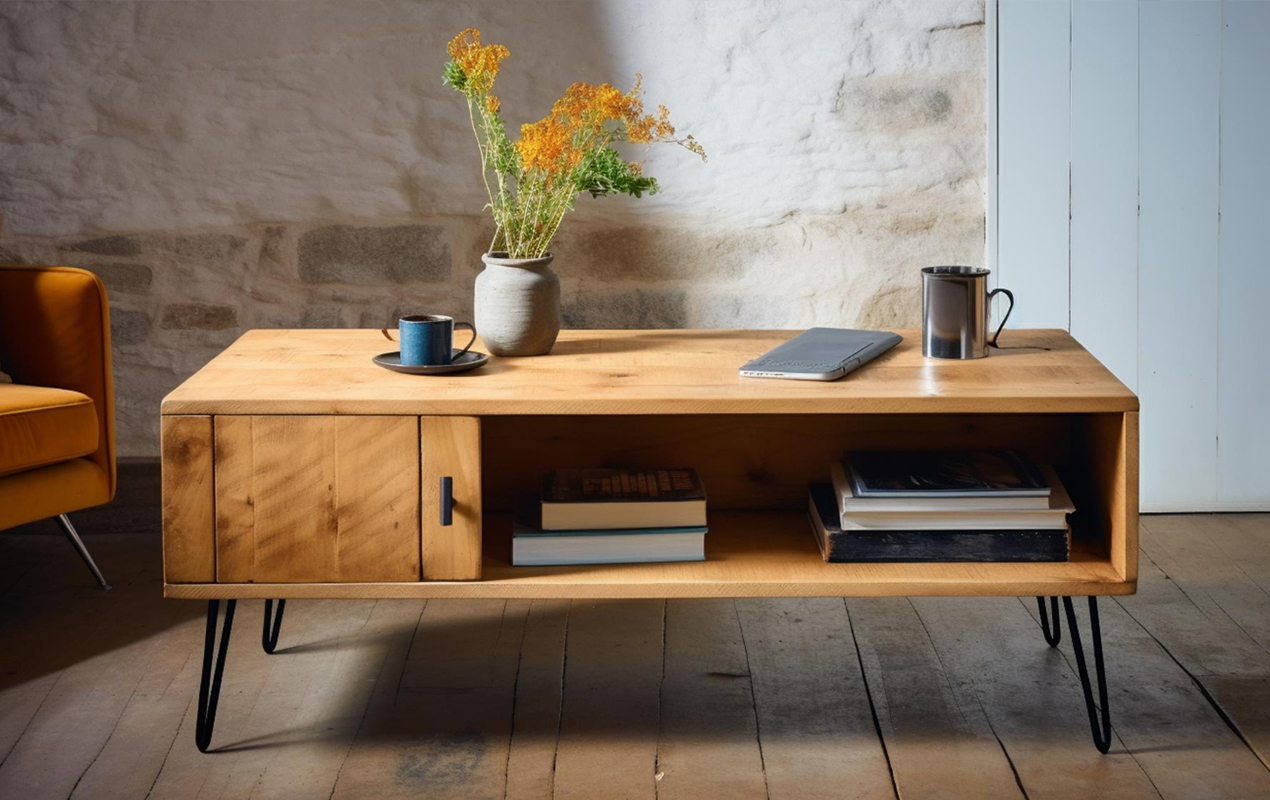
Photo by Vibeink from Freepik
Understanding the Averages
When we talk about the "average weight" of a coffee table, we're not referring to a single, definitive number. Instead, it's more accurate to think in terms of weight ranges that vary depending on the table's size, construction, and design. Just as there's no one-size-fits-all coffee table, there's no universal weight that applies to every design.
Generally, you can expect the following weight ranges based on size:
Size (Inches)
Small:Length: 24-36
Width: 18-24
Height: 16-18
Weight Range (Pounds): 15 - 30
Medium:
Length: 36-48
Width: 24-30
Height: 16-18
Weight Range (Pounds): 30 - 50
Large:
Length: 48-60 (or more)
Width: 30-36 (or more)
Height: 16-18
Weight Range (Pounds): 50 - 75+
It's important to note that these are just broad estimates. The actual weight of a particular table can fall outside these ranges, depending on the materials used and the intricacy of its design. For instance, a small table comprising solid oak will be significantly heavier than one of the same size made of lightweight aluminum or thin sheets of glass. Similarly, a large table with an uncomplicated, open design may weigh less than a smaller one with built-in storage drawers or a thick, carved base.
Read More: 20 White Oak Coffee Table Ideas for Rustic Refinement
This inherent variability is what makes understanding the relationship between size, design, and weight so crucial. By delving into these factors, you can better predict a table's approximate weight and make better-informed decisions about its suitability for your space.
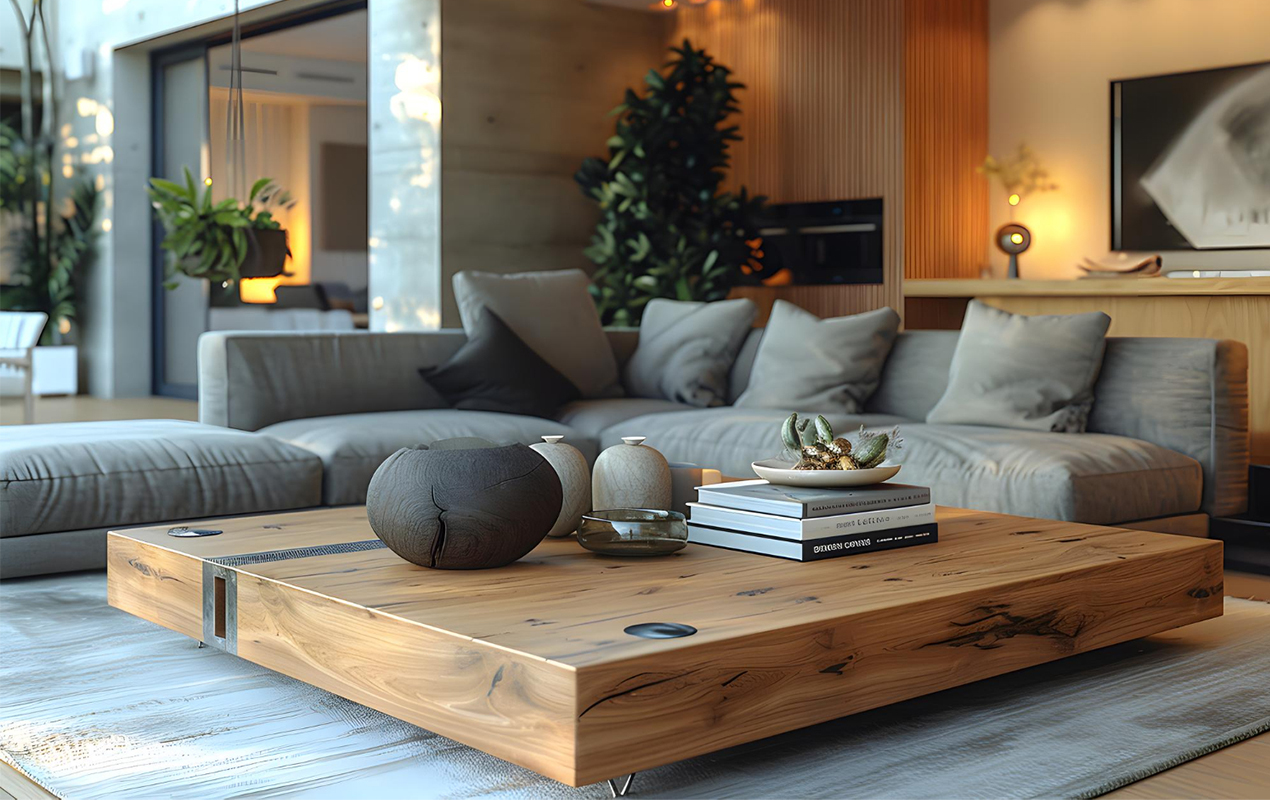
Photo by User14699452 from Freepik
How Size Affects Coffee Table Weight
With coffee tables, size undeniably matters – especially when it comes to weight. It's a simple principle: the larger the table, the more material it requires, and thus, the heavier it tends to be. Think of it like baking a cake: a single-layer cupcake weighs considerably less than a three-tiered cake.
Let's break down the impact of each dimension:
- Length: A longer table necessitates a longer tabletop and potentially more supporting legs or a wider base. Each additional inch translates to more material and added weight.
- Width: Similar to length, a wider table demands a larger surface area for the tabletop and potentially a more robust base to ensure stability, naturally increasing the weight.
- Height: While height might seem less impactful, it still plays a role. A taller table typically requires longer legs or a more substantial base for support, contributing to its weight.
To illustrate, consider these examples:
- Small Square Coffee Table: A typical small square table (around 30 inches on each side) might weigh between 15-25 pounds, depending on the materials and design.
- Large Rectangular Coffee Table: A larger rectangular table (around 48 inches long and 34 inches wide) could easily weigh 50-70 pounds or more, especially if utilizing dense hardwood or featuring storage compartments.
Moving from the basic dimensions, the thickness and density of the top and legs also influence the weight. A thick slab of marble will weigh far more than a thin sheet of tempered glass, even if they share the same dimensions. Similarly, chunky wooden legs will add more heft than slender hairpin alternatives. Understanding how these factors interplay allows you to visualize the weight implications of different sizes and make an educated guess about a table's potential heft before even lifting it.
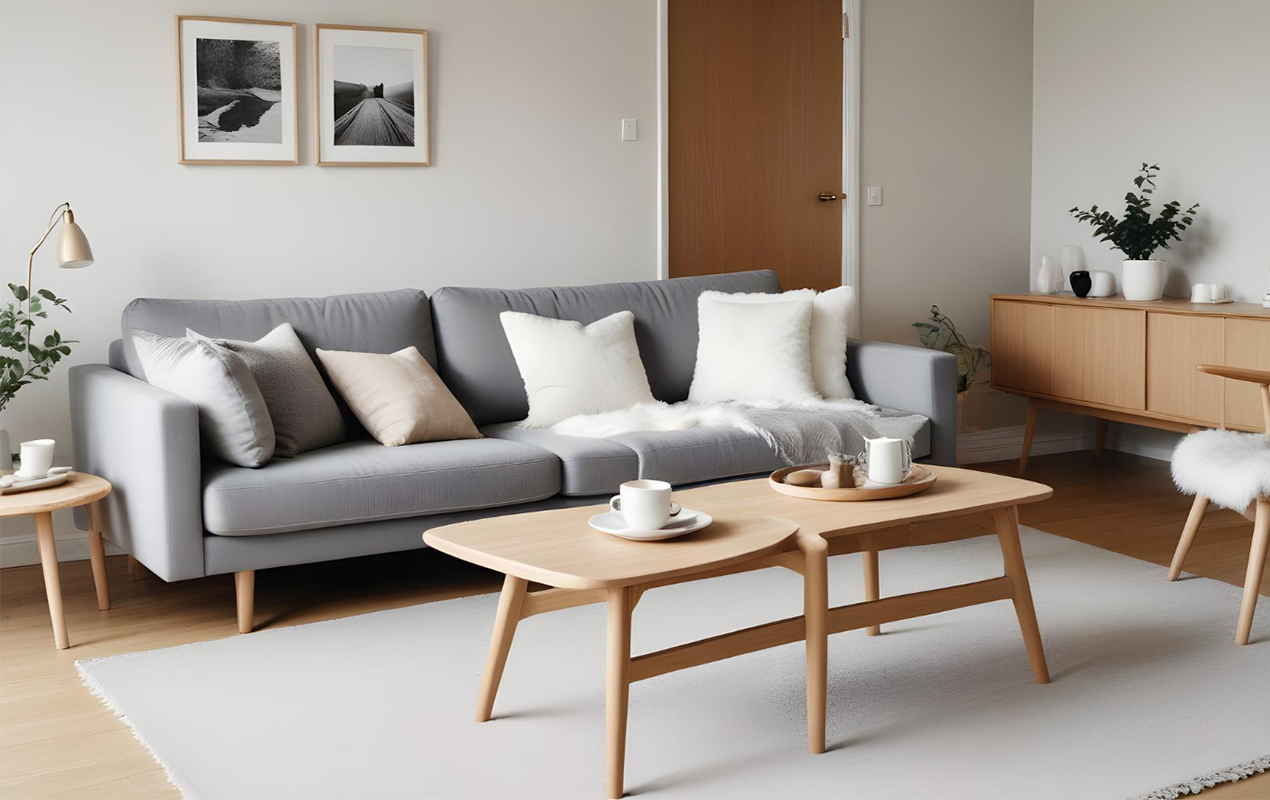
Photo by LetsRock from Freepik
How Design Affects Coffee Table Weight
While size lays the groundwork for a table's weight, its design is the architect that shapes the final outcome. Every design element, from the materials used to the intricacies of its base, can affect how heavy or light the table feels.
Material Matters
The material choice is perhaps the most influential aspect in defining a table's weight. Each material comes with its own density and weight characteristics:- Wood: Different types of wood vary in weight. Dense hardwoods like oak or walnut will result in a heavier table than lighter options like pine or cedar.
- Metal: Metal coffee tables can be surprisingly lightweight, especially those made of aluminum or hollow steel tubing. However, tables crafted from solid iron or steel can be exceptionally heavy.
- Glass: Glass tops offer an airy, modern aesthetic and are generally lighter than solid wood. However, the thickness of the glass and the supporting structure (often metal) will affect the overall weight.
- Stone: Coffee tables with stone tops (marble, granite, etc.) are undeniably statement pieces, but their weight can be a challenge. The thickness of the stone and the type of base will determine the final heft.
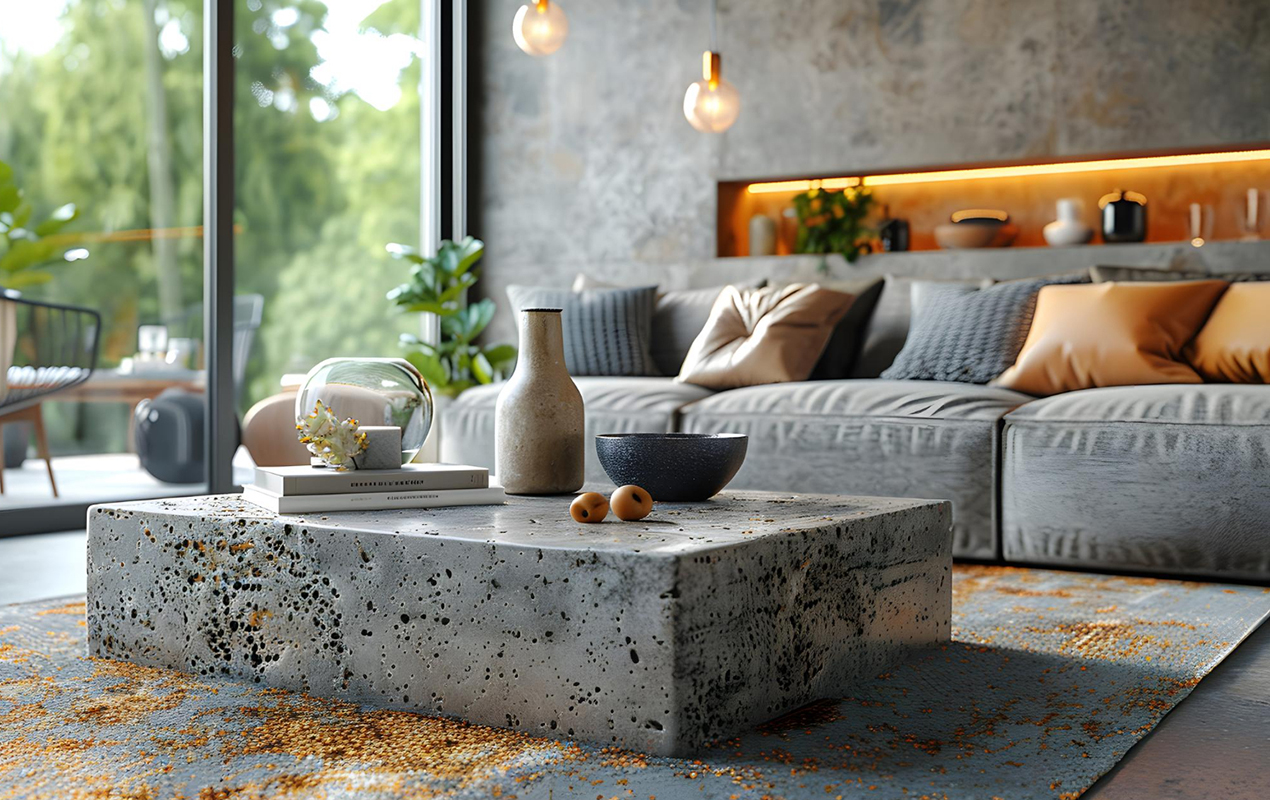
Photo by User14699452 from Freepik
Base and Leg Styles
The design of the base or legs also plays a role in weight distribution:- Solid Base: Tables with a solid wood or metal base tend to be heavier and offer excellent stability.
- Pedestal Base: A single pedestal base can create a lighter feel, but the material and thickness of the pedestal will impact the weight.
- Trestle Base: Trestle legs offer a balance of style and stability, with the weight depending on the material and thickness of the legs.
- Leg Styles: Thin, tapered legs will contribute less weight than thick, blocky ones.
Additional Features:
Extra features can add both practicality and weight to a table:- Storage: Built-in drawers, shelves, or compartments increase the weight due to the added materials and mechanisms.
- Lift-Top: Lift-top coffee tables often have heavier mechanisms to facilitate the lifting motion.
The Style vs. Weight Conundrum
Coffee table design often involves a trade-off between style and weight. Sleek, minimalist designs with thin materials and open bases tend to be lighter, while more ornate, traditional designs with solid wood and intricate detailing are heavier. The choice depends on your personal preference, lifestyle, and practical needs. Consider each aspect to ensure you can make an informed decision that aligns with your aesthetic vision and functional requirements.Read More: Redefine Your Living Room: How to Style a Round Coffee Table
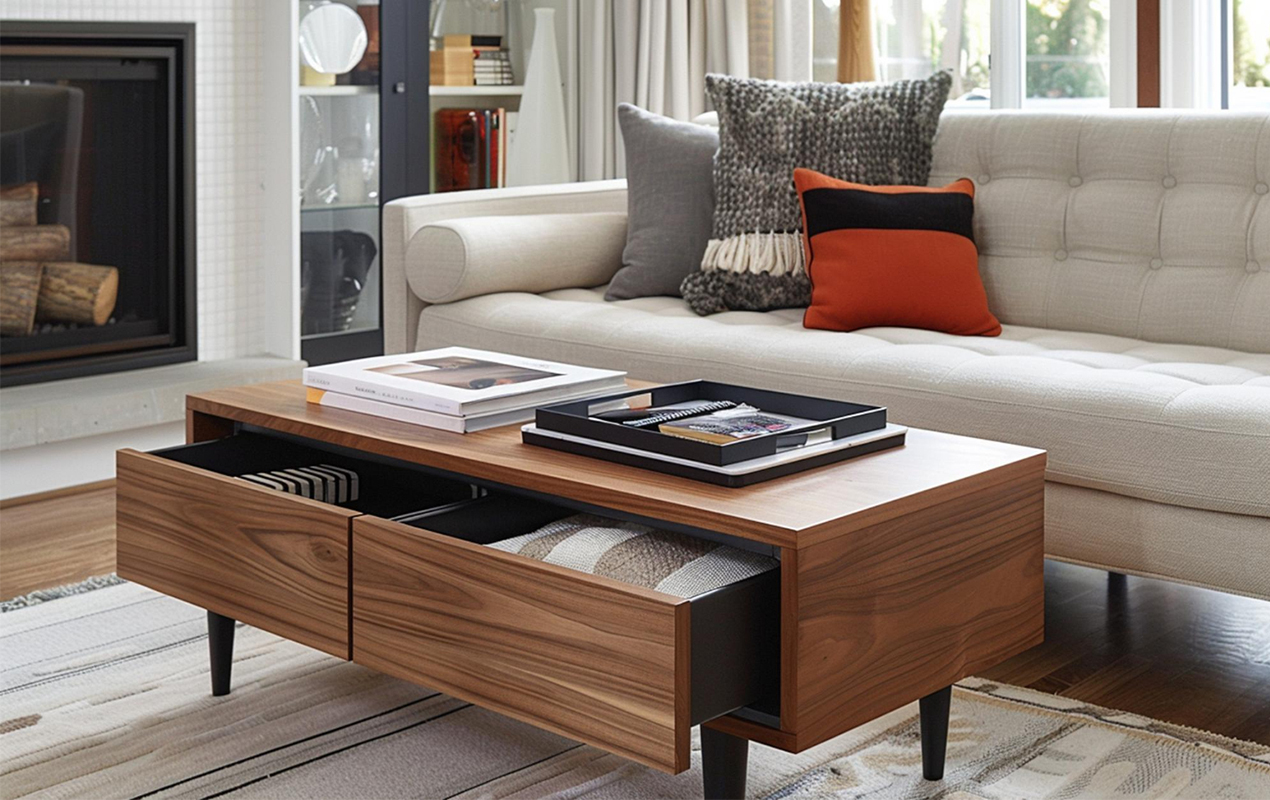
Photo by Griters from Freepik
Practical Implications
Understanding the weight of a coffee table isn't merely an academic exercise—it has real-world implications for safety, practicality, and your overall satisfaction with the piece.
Safety First
Lightweight tables, while aesthetic and easy to move, can pose a tipping hazard. This is particularly concerning in households with young children who might try to climb or lean on the table or pets accidentally knocking it over. To mitigate this risk:- Secure the table: If you have a lightweight table, consider anchoring it to the wall or floor using furniture straps or anti-tip brackets.
- Avoid top-heavy designs: Tables with heavy tops and narrow bases are more prone to tipping. Look for a balanced design where the weight is evenly distributed.
- Consider alternative materials: If you're concerned about glass tops shattering, explore options like tempered glass or acrylic, which are more durable and less likely to break into shards.
Moving with Care
Before attempting to move a coffee table, it's wise to estimate its weight. This will help you determine if you need equipment like furniture sliders. You can often find the weight listed in the product description or on the manufacturer's website. If not, try these tips:- Lift a corner: Lift one corner slightly to gauge its weight. Be sure to bend your knees and lift with your legs to avoid injury.
- Consult similar tables: If you know the material and approximate size of your table, research similar models online to get an idea of their weight.
- Ask for help: Don't hesitate to ask a friend or family member for assistance, especially if the table feels heavy or awkward to lift alone.
The Right Weight for You
Choosing the ideal table weight boils down to your individual needs and preferences:- Frequent Rearranging: If you like to change up your décor often, a lighter table will be easier to move and maneuver.
- Practical Use: Consider how you'll use the table. If you plan to stack heavy books or use it for meals, a sturdier, heavier table might be a better choice.
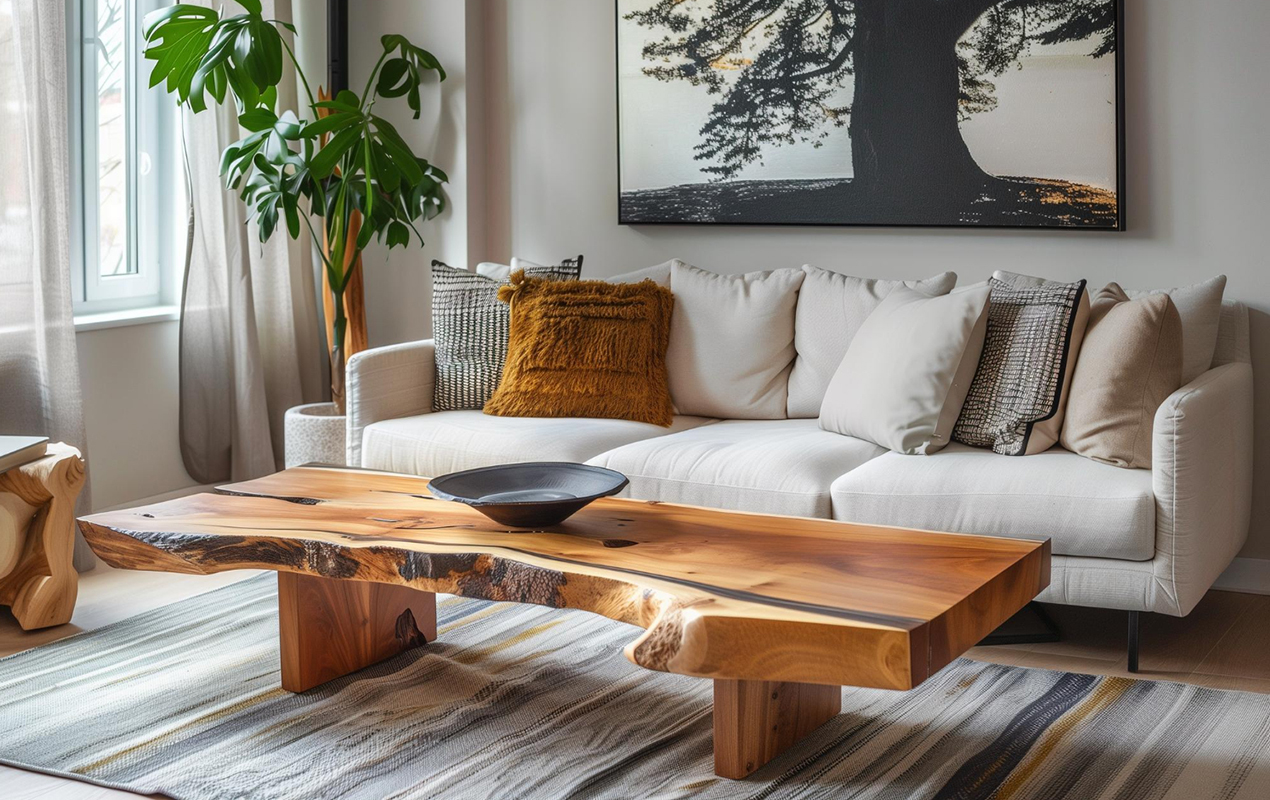
Photo by Lacerdabh from Freepik
Final Thoughts
The weight of your coffee table isn't merely a number – it's a balance of aesthetics, function, and physics. Each table, whether it's a sleek glass-topped minimalist design or a sturdy heirloom crafted from solid wood, has a weight influenced by size and design. There's no one-size-fits-all answer when it comes to the "average" weight. Instead, consider the dimensions and materials: a sprawling oak table with built-in storage will be far heavier than a petite metal-framed piece with a thin, marble top.
As you search for the right table, prioritize stability, particularly if safety is a concern. Think about how often you'll be moving the table and your aesthetic preferences. And don't hesitate to seek expert advice if you're drawn to a custom design or have specific weight needs. By understanding the scale of your table, you can build a living space that's stylish, practical, and safe. With this newfound knowledge, choose a table that doesn't just complement your decor, but also complements your life.
https://www.decasacollections.com/average-weight-of-a-coffee-table/
Comments
Post a Comment